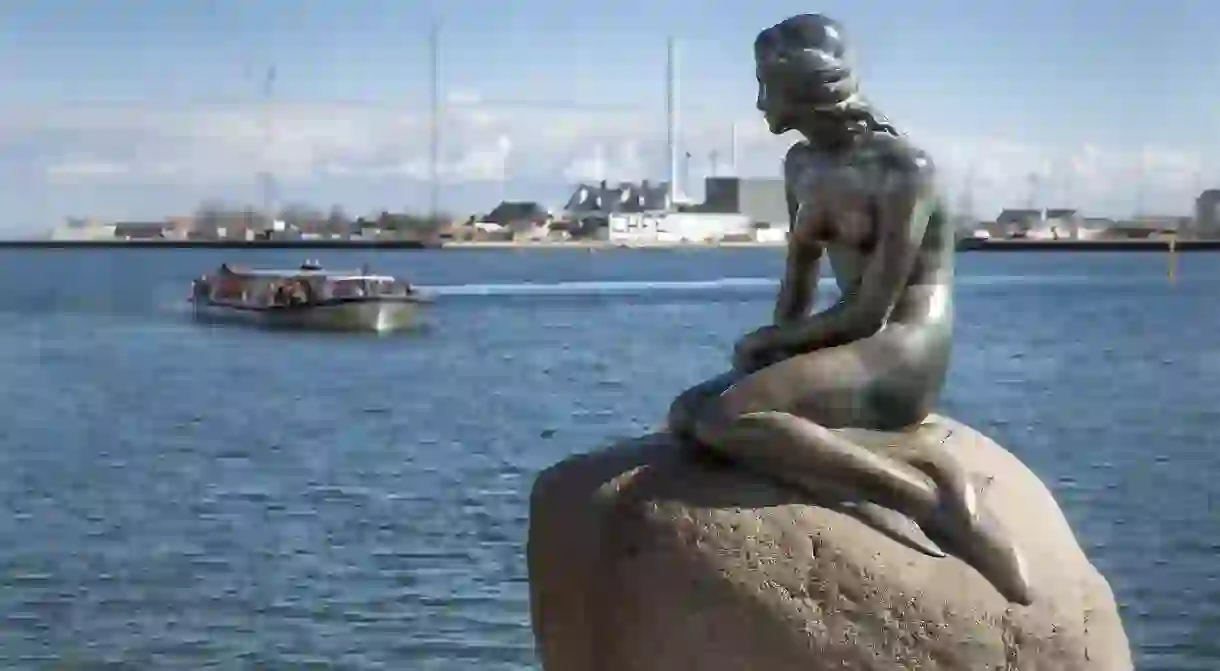Why is Copenhagen's Little Mermaid a Target for Vandals?

Copenhageners and tourists walking across Langelinie, where the statue of Little Mermaid can be found, were taken with surprise when they saw Denmark’s most popular statue had once again been vandalised. Targeted by vandals several times since its unveiling in 1913, the Little Mermaid had this time been covered in blue and white paint.
Little Mermaid’s Brief History
The bronze sculpture inspired by Hans Christian Andersen’s fairy tale was created by Edvard Eriksen in 1913 and has since been considered Denmark’s national symbol. For over a century, the 4.1 feet (1.25 meters) tall statue has been standing in the same spot by the waterfront attracting millions of tourists.
However, not many people know that due to vandalism that have taken place over the years, not all statue’s parts are the originals ones. The reasons why the notable sculpture has been defaced several times vary; in many cases, the motives remain unknown.

Target of Political Groups…and Drunk Locals
1964 was the first time Danes saw their beloved sculpture defaced when someone cut her head off. For the next 30 years, no one found the head (which was by then replaced with another one) or the person behind the action. But in 1997, Jørgen Nash, a member of the political group Situationist, claimed he was the culprit.
As the years passed by and the statue remained untouched, Copenhageners believed that the vandalism of 1964 was an unfortunate incident that would not be repeated in the future. However, they were proven wrong 20 years later. In 1984, her hand was sawed off by two drunk men. Their actions had nothing to do with political protest, and they made sure to return the ripped parts.
In 1998 a group of radical feminists decided to behead the renowned sculpture in order to “create a symbol of sexually fixated and misogynist male dream of women as bodies without heads”. The head was left two days later outside a Danish television station. It was reattached to the statue’s body the next month.
The next attack took place only five years later. This time, explosives were used to blow the statue off the rock. It was found floating in the sea and instantly put back in its place. Some say that anti-war protesters were responsible for this vandalism, who used it as a form of demonstration for the Danish government’s involvement in the Iraq war.

Little Mermaid’s Different Colors and ‘Accessories’
As a protest against Turkey’s application to join the European Union, a burqa adorned the Little Mermaid’s head in 2004 while in 2007, a Muslim dress and head scarf ‘decorated’ the otherwise nude sculpture. On International Women’s Day in 2006, a sex toy was attached to the sculpture’s hand.
In May 2017, the statue was painted in red and the message “Danmark defend the whales of the Faroe Islands” was written in front of the sculpture’s. Assumptions were unnecessary this time as the culprits’ message was clear enough.
Finally, on June 14, 2017, the Little Mermaid was covered in blue and white paint and “Befri Abdulle” (Free Abdulle). Once more, the people behind the action as well as the reason of the protest aren’t clear. However, some claim it’s a reference to the 36-year-old Somali citizen, Abdulle Ahmed who has been hospitalized in a Danish-psychiatric clinic for over a decade. While there, he has unwillingly received medication due to accusations that he has been violent against caregivers.














